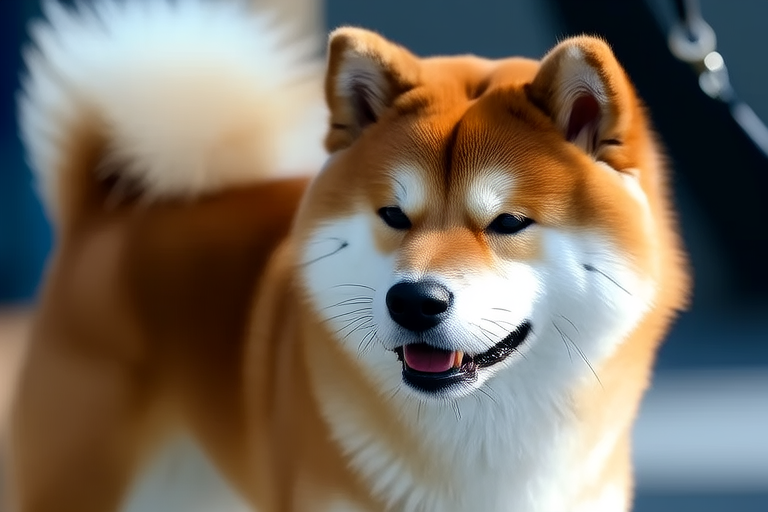Training Tips for Owners of Spirited Shiba Inus: A Comprehensive Guide
The Shiba Inu is a breed that captivates hearts with its striking appearance and spirited demeanor. Known for their fox-like features, small size, and an inherent air of independence, these dogs have become popular pets around the world. Originating from Japan, where they were bred as hunting companions, Shibas possess a unique blend of loyalty, intelligence, and a touch of mischief that makes them both delightful and challenging companions.
The Unique Characteristics of Shiba Inus
Shibas are known for their thick, double coats that come in shades of red, sesame (red with black-tipped hairs), and cream. Their compact build and alert expression make them stand out in any crowd. However, beneath their charming exterior lies a spirited and sometimes stubborn nature. Shibas are often described as having a “small dog in a big dog’s body” mentality, meaning they can be surprisingly assertive despite their relatively small size.
Challenges Faced by Shiba Inu Owners
Owning a Shiba Inu can be a rewarding experience, but it also comes with its share of challenges. Their independent and strong-willed temperament can lead to difficulties in training and socializing. Shibas are notorious for their selective listening skills, often choosing to ignore commands or engage in behaviors that they find more interesting. This tendency can frustrate even the most patient owners, especially when it comes to housebreaking, leash walking, and obedience training.
Effective Training Methods
To successfully train your Shiba Inu, it’s essential to adopt a positive reinforcement approach. Positive reinforcement involves rewarding desired behaviors rather than punishing unwanted ones. This method fosters a bond of trust and respect between you and your dog, making training sessions enjoyable for both parties. Consistency is key in this process; ensuring that all family members follow the same rules and rewards will help reinforce good behavior.
Patience is equally important. Shibas may take longer to learn new commands compared to other breeds, so it’s crucial to remain calm and encouraging throughout the training process. Break down each command into smaller steps and celebrate every small success. For instance, if teaching your Shiba to sit, start by gently pressing their bottom until they comply, then reward them immediately with a treat and praise. Gradually increase the difficulty by asking them to sit without physical assistance before giving the treat.
Socialization
Early socialization plays a vital role in shaping your Shiba Inu’s personality and behavior. Expose your puppy to various environments, people, and other animals as early as possible to help them develop confidence and adaptability. Regular visits to parks, pet-friendly stores, and social gatherings can provide valuable opportunities for interaction and learning.
Basic Commands
Teaching basic commands such as ‘sit,’ ‘stay,’ ‘come,’ and ‘leave it’ is fundamental in establishing control and communication with your Shiba Inu. Start by introducing one command at a time, ensuring your dog masters each before moving on to the next. Use treats, toys, and verbal praise as incentives during training sessions.
Managing Energy Levels
Shibas are energetic dogs that require regular exercise to maintain physical and mental well-being. Daily walks, playtime, and interactive toys can help channel their energy into productive activities. Consider enrolling your Shiba in agility classes or dog sports like flyball or lure coursing to keep them engaged and stimulated.
Tips for Addressing Specific Behaviors
Stubbornness
Stubbornness is perhaps the most notable trait of Shiba Inus. To combat this, focus on building a strong relationship based on mutual respect. Spend quality time together outside of training sessions to strengthen the bond. When faced with stubbornness during training, try breaking down the task into simpler steps or using different motivators like favorite toys instead of treats.
Excessive Barking
Barking is a natural form of communication for dogs, but excessive barking can become a nuisance. Teach your Shiba a ‘quiet’ command by saying the word firmly whenever they bark excessively. Once they stop, reward them with a treat and praise. Gradually increase the duration of silence required for the reward.
Digging
Digging is another common issue among Shibas. To discourage this behavior, redirect their attention to appropriate outlets like digging pits filled with sand or toys designed for burrowing. Praise and reward your dog when they use these designated areas.
Ongoing Learning and Support
Owning a Shiba Inu is a lifelong commitment that requires continuous learning and adaptation. Join local or online communities dedicated to Shiba Inu owners to exchange experiences, tips, and support. Books, articles, and seminars focused on canine behavior and training can also provide valuable insights. Remember, every dog is unique, so tailor your approach based on your individual pet’s needs and personality.
In conclusion, while Shiba Inus present some unique challenges, their loyalty, intelligence, and charm make them beloved companions. By understanding their spirited nature and employing effective training techniques, you can enjoy a harmonious and fulfilling relationship with your Shiba Inu. Embrace the journey of discovery and growth, and cherish the moments of joy and connection shared with your furry friend.
